The Many Faces of Whang-od, Philippines’ Legendary Tattooist
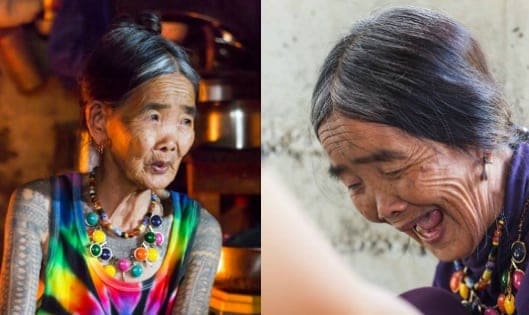
“I am a tattoo maker because I am poor.”
The irony of this statement hits you deep within your soul.
More so when you realize those were uttered in her native language by none other than Apo Whang-od, revered as the last living “mambabatok,” and the guardian of an almost-extinct art form.
Also Read: 10 Shocking Old-Timey Practices Filipinos Still Do Today
But for those who truly know and appreciate the traditional Kalinga tattoo, Whang-od is anything but poor. She may not be officially recognized as such, but the nearly 100-year-old Whang-od (or Fang-od) is one of Philippines’ last living cultural treasures.
She’s been featured on CNN, National Geographic, and countless local and international magazines. The oldest tattoo artist in the country was also featured in an exhibit entitled “Tattoo: Ritual, identity, obsession, art” held at the Royal Ontario Museum in Canada.
Thanks to her popularity, throngs of tourists are now willing to endure 16 hours of travel from Manila to Whang-od’s village in Buscalan, all for the rare opportunity of getting inked by the legendary tattooist.
The history of the Kalinga tattoo (variably called batuk, batok, or batek) is just as terrifying as it is fascinating.
Kalinga warriors were known as fierce headhunters back in the day, and each tattoo on their skin represents every person they had killed in a tribal war. In other words, the tattoo was–and still is–a symbol of bravery that separates the weak Kalinga men from the more courageous and experienced warriors.
Designs vary, from the centipede in the arms for protection to the more complex eagle on the chest reserved only for the bravest of men.
Also Read: 9 Philippine Icons and Traditions That May Disappear Soon
For the ladies, however, tattoos are a way to stand out from the crowd, a beautifying procedure long considered as a rite of passage. Their arms are often covered by tattoos of snakeskin and rice grain patterns while their foreheads decorated by equally beautiful designs of crosses, dots, and triangles.
Whang-od’s first tattoo, she recalls, was a ladder and a python, designs that have no meanings at all and permanently inked on her skin so that she could “belong to the group.”
While the Kalinga tattoos have lost some of its ancient qualities over the years, the materials used by Whang-od have remained the same. These include a coconut bowl where water, charcoal, and sweet potato are combined.
The resulting mixture is where a lemon or calamansi thorn attached to a bamboo stick is dipped. With every sound produced by the bamboo stick hammering onto the other containing the thorn, a native tattoo done in the centuries-old tradition is permanently inked on any willing person’s skin.
For many Filipinos, getting tattooed by Whang-od is a once-in-a-lifetime encounter worth including in one’s bucket list. But just as every tattoo design has an underlying meaning, Whang-od the tattoo artist has an interesting story to tell.
Also Read: 10 Weird Phenomena That Perfectly Sum Up Today’s Filipino Culture
It is said that the empty space on her right wrist is reserved for the only man she loved. During WWII, the Butbut Kalinga, of which Whang-od is a member, fought not only the Japanese forces but also the Philippine soldiers who stole food from them.
Whang-od’s boyfriend was one of the casualties in the war, and she has never married since.
Today, the humorous but sometimes bad-tempered Apo Whang-od relies on the money she earns as a tattoo maker for her daily sustenance. When not designing native tattoos, she is often seen tending her livestock, pounding rice, or spending her time alone as if engaged in a deep thinking.
As Whang-od enters what could possibly be the final chapters of her life, only two people are said to have been primed to follow in her footsteps.
But with Kalinga headhunting now extinct and the comforts of modern life-threatening to change their priorities, the future of the traditional Kalinga tattoo art remains hazy at best.
READ: 12 Surprising Facts You Didn’t Know About Pre-Colonial Philippines
To pay tribute to Whang-od and the fascinating art she helped shape, we’re displaying here some of the fascinating photographs taken by our good friends from IBARRA Photography.
This rare look into her daily life paints a beautiful portrait of Apo Whang-od, an artist molded by traditions and a Filipino now immortalized by her own art.
To buy prints of these beautiful images for your home or school, you can reach IBARRA Photography through their Facebook page or email address (ibarrasiapno.photography@
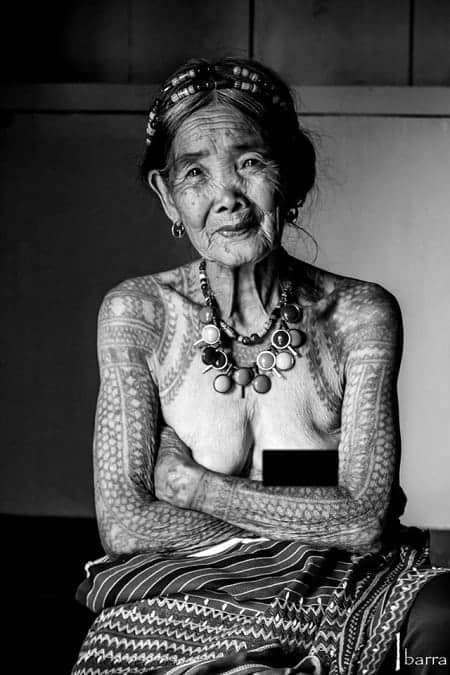
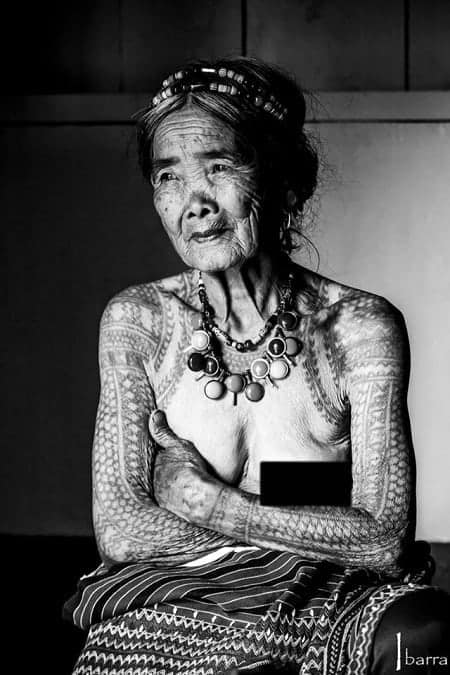
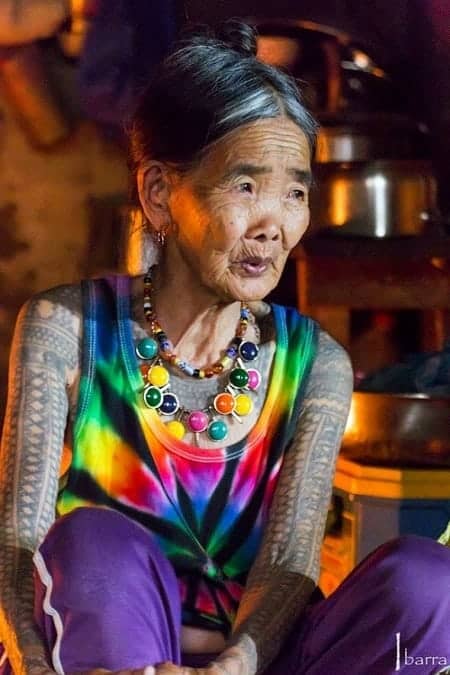
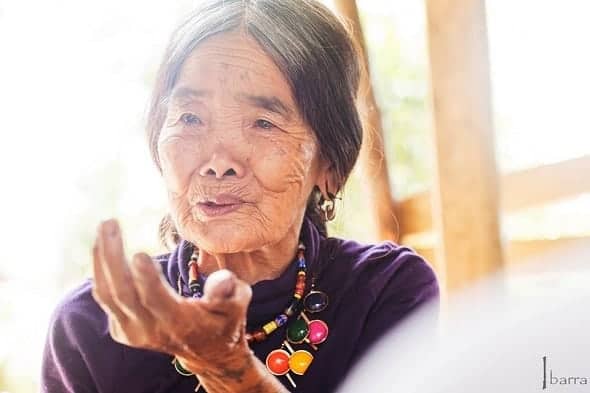
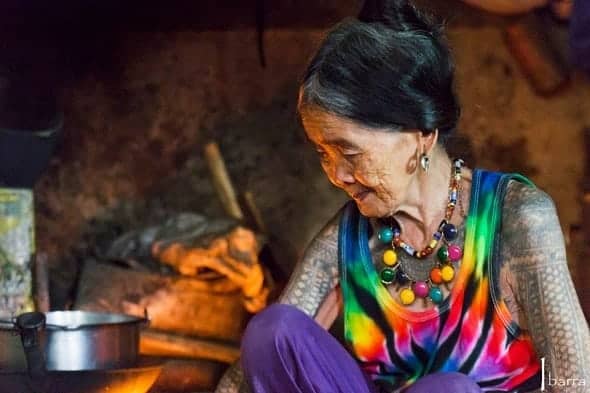
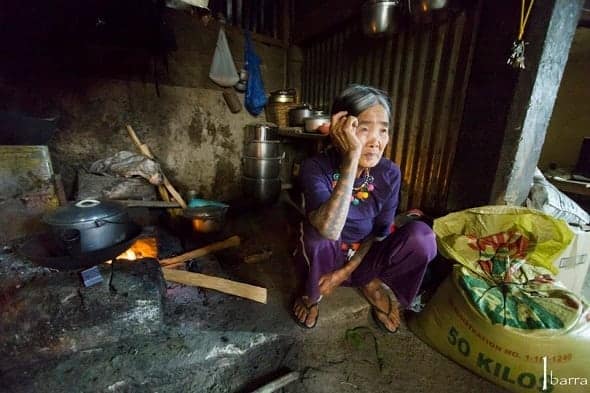
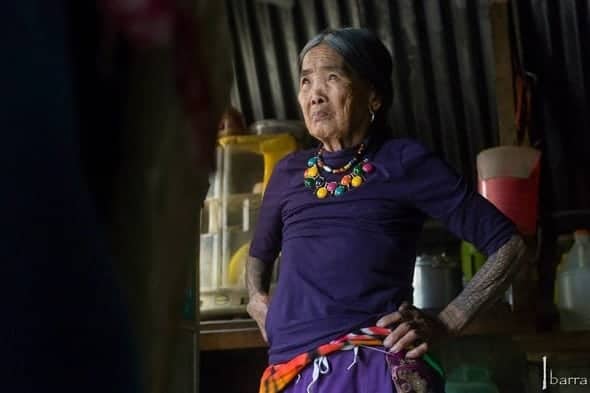
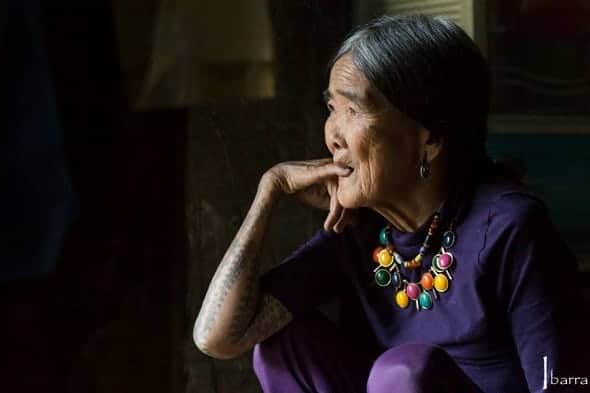
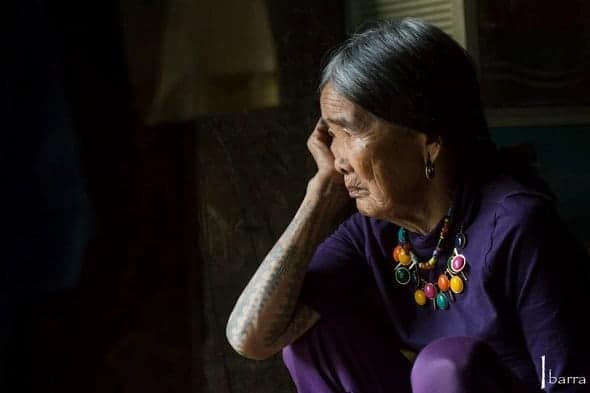
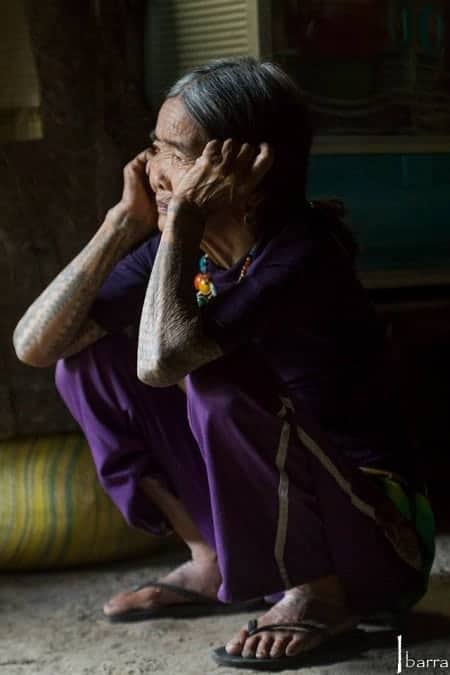
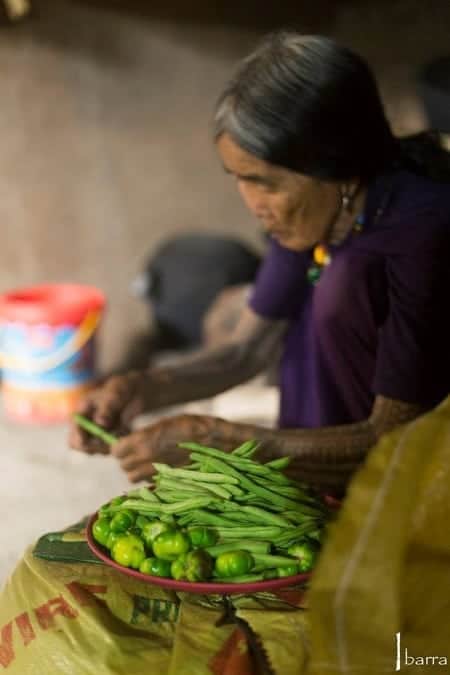
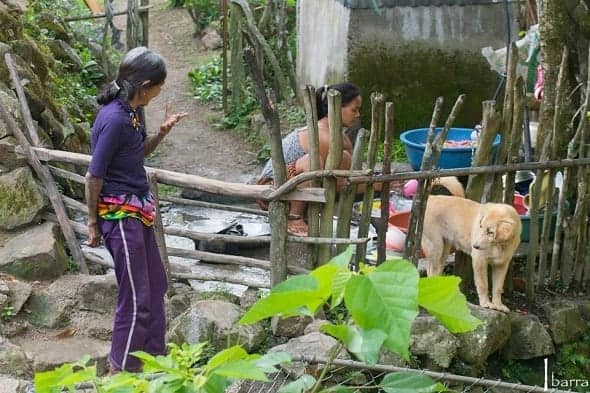
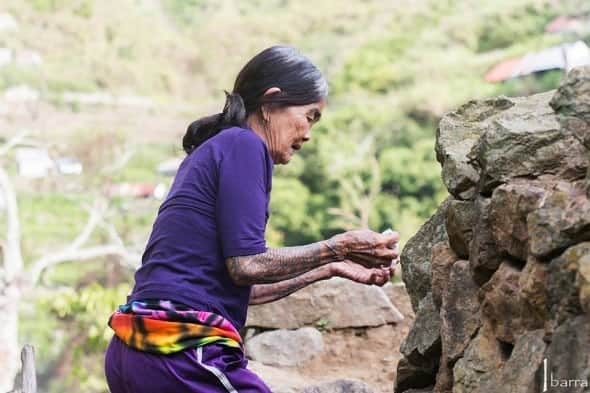

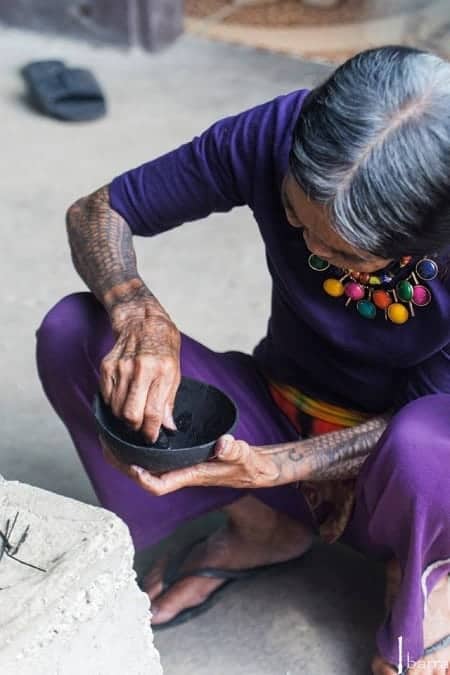
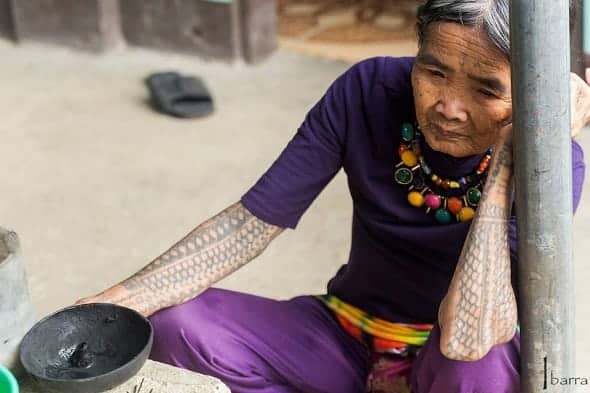
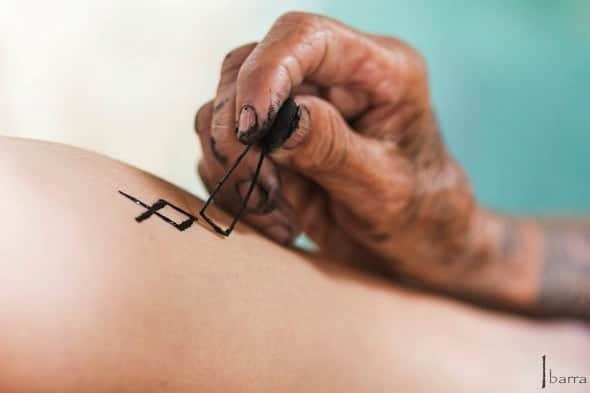
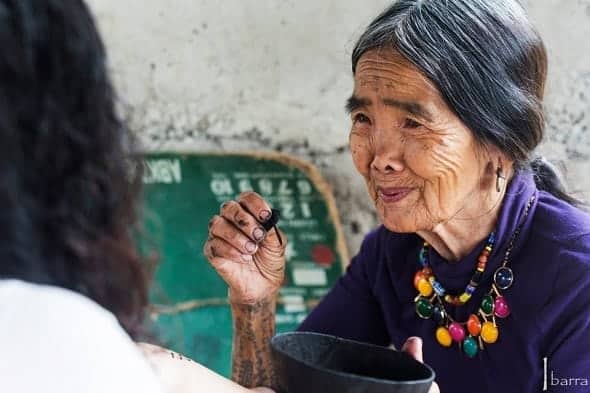
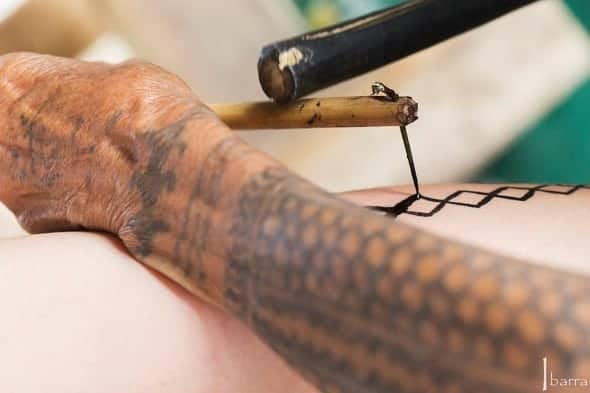
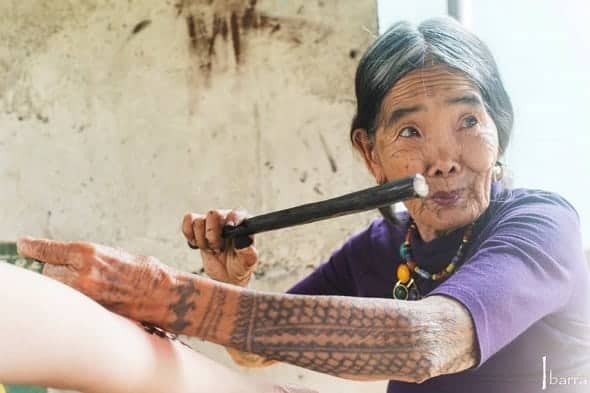
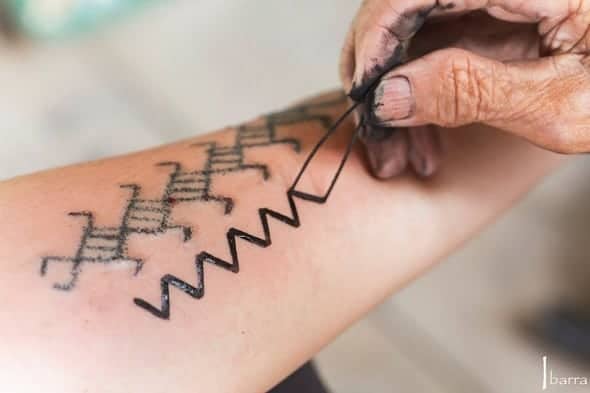
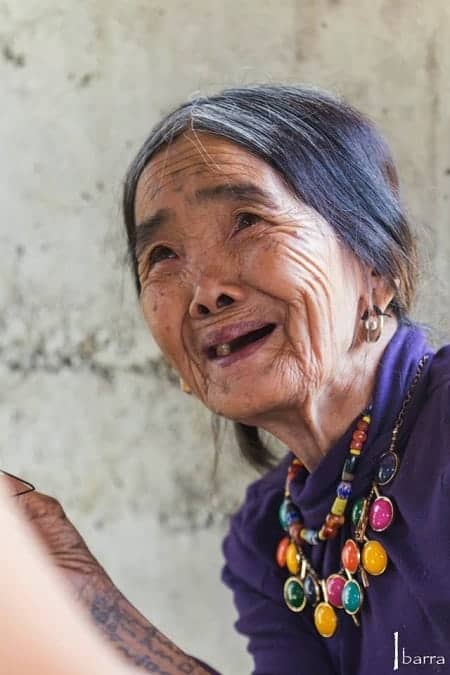
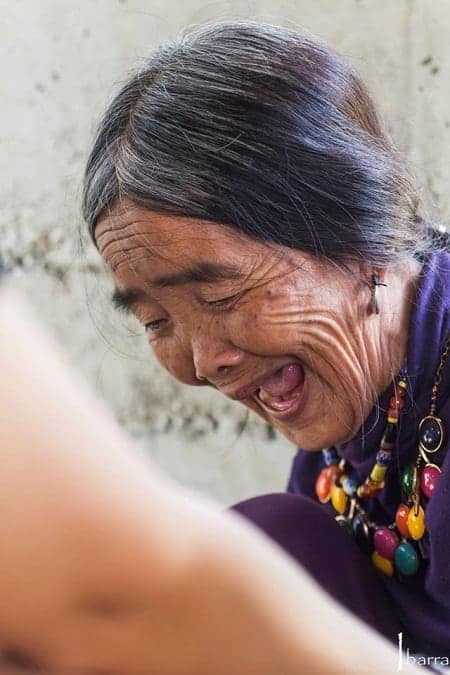
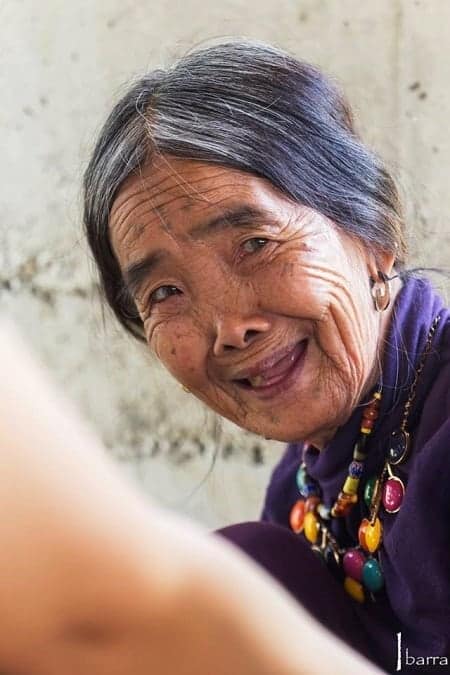
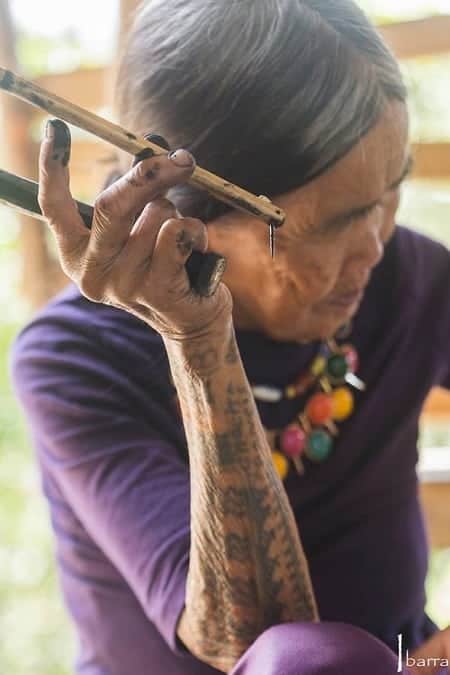
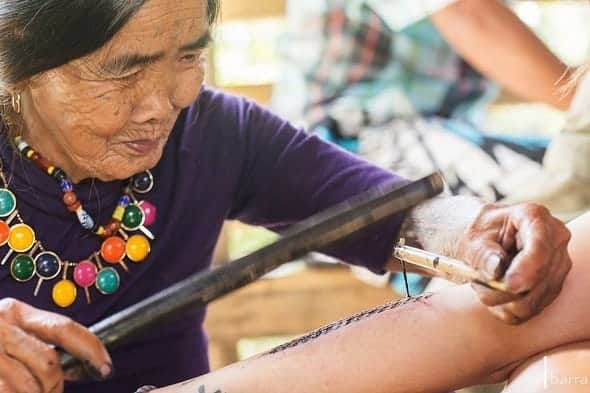
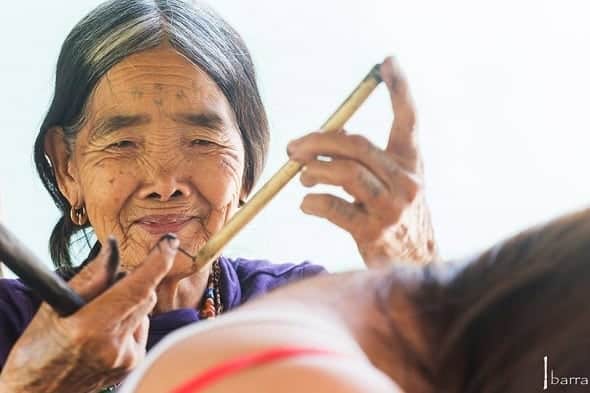
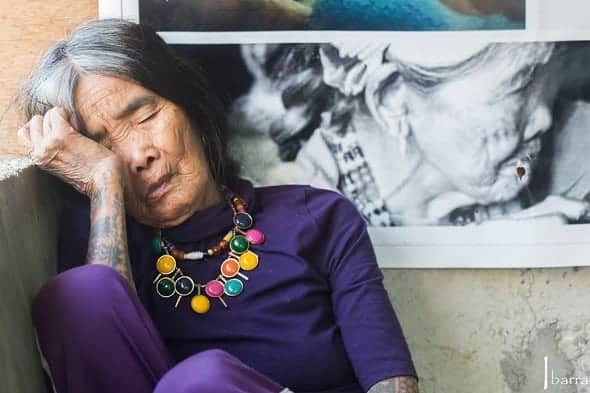
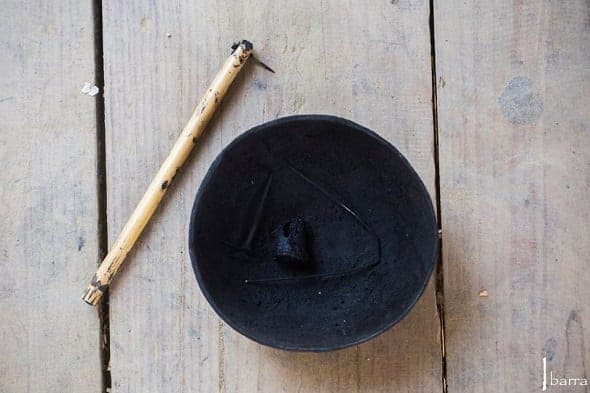

References
Catolico, G. (2016). ‘Mambabatok’ Whang-od featured in Canadian exhibit. Inquirer.net. Retrieved 17 July 2016, from http://goo.gl/7jjryd
Looking for Stories,. (2016). Whang Od: The Kalinga Tattoo maker. Retrieved from https://goo.gl/b2YWo6
Pinili, P. (2015). Indelible moments with Whang-od, a living legend. Rappler. Retrieved 17 July 2016, from http://goo.gl/9kIVhu
Reyes, O. (2013). In Kalinga, tattoo by 93-year-old artist is skin-deep with pride and ancient traditions.InterAksyon. Retrieved 17 July 2016, from http://goo.gl/DYziCs
Whang-Od – Traveler Photo Contest 2014. (2014). National Geographic. Retrieved 17 July 2016, from http://goo.gl/BACf3H
FilipiKnow
FilipiKnow strives to ensure each article published on this website is as accurate and reliable as possible. We invite you, our reader, to take part in our mission to provide free, high-quality information for every Juan. If you think this article needs improvement, or if you have suggestions on how we can better achieve our goals, let us know by sending a message to admin at filipiknow dot net
Copyright Notice
All materials contained on this site are protected by the Republic of the Philippines copyright law and may not be reproduced, distributed, transmitted, displayed, published, or broadcast without the prior written permission of filipiknow.net or in the case of third party materials, the owner of that content. You may not alter or remove any trademark, copyright, or other notice from copies of the content. Be warned that we have already reported and helped terminate several websites and YouTube channels for blatantly stealing our content. If you wish to use filipiknow.net content for commercial purposes, such as for content syndication, etc., please contact us at legal(at)filipiknow(dot)net